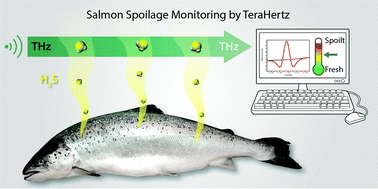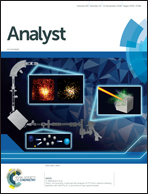Monitoring of food spoilage by high resolution THz analysis
Abstract
High resolution rotational Terahertz (THz) spectroscopy has been widely applied to the studies of numerous polar gas phase molecules, in particular volatile organic compounds (VOCs). During the storage of foodstuffs packed under a protective atmosphere, microbial activity will lead to the generation of a complex mixture of trace gases that could be used as food spoilage indicators. Here we have demonstrated that the THz instrumentation presently available provides sufficient sensitivity and selectivity to monitor the generation of hydrogen sulfide (H2S) in the headspace of packed Atlantic salmon (Salmo salar) fillet portions. A comprehensive comparison was made using selective-ion flow-tube mass spectrometry (SIFT-MS) in order to validate the THz measurements and the protocol. The detectivity of a range of alternative compounds for this application is also provided, based on the experimental detection limit observed and molecular spectroscopic properties. Molecules like ethanol, methyl mercaptan and ammonia are suitable indicators with the presently available sensitivity levels, while dimethyl sulfide, acetone and butanone may be considered with a sensitivity improvement of 2 orders of magnitude.



 Please wait while we load your content...
Please wait while we load your content...